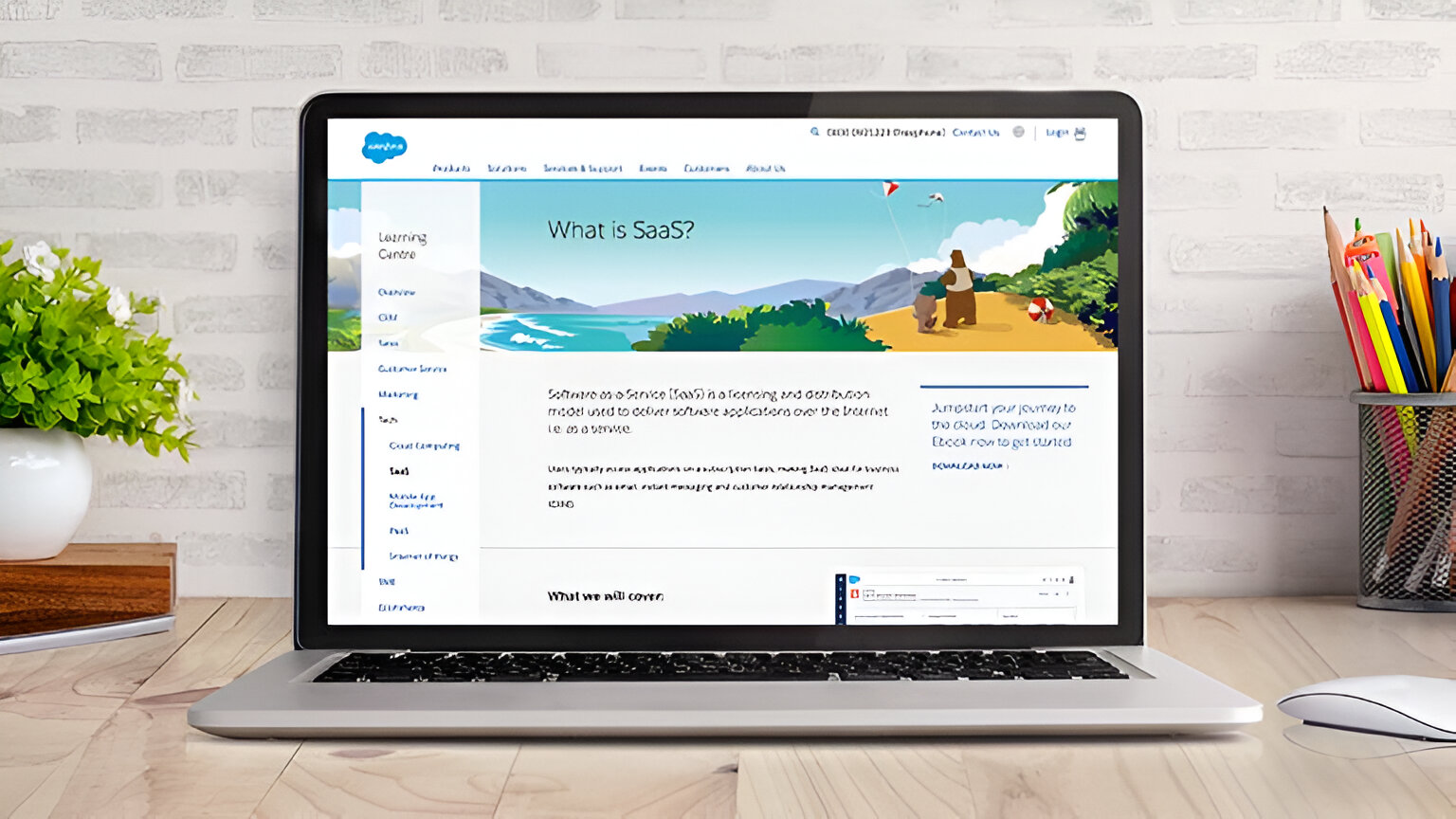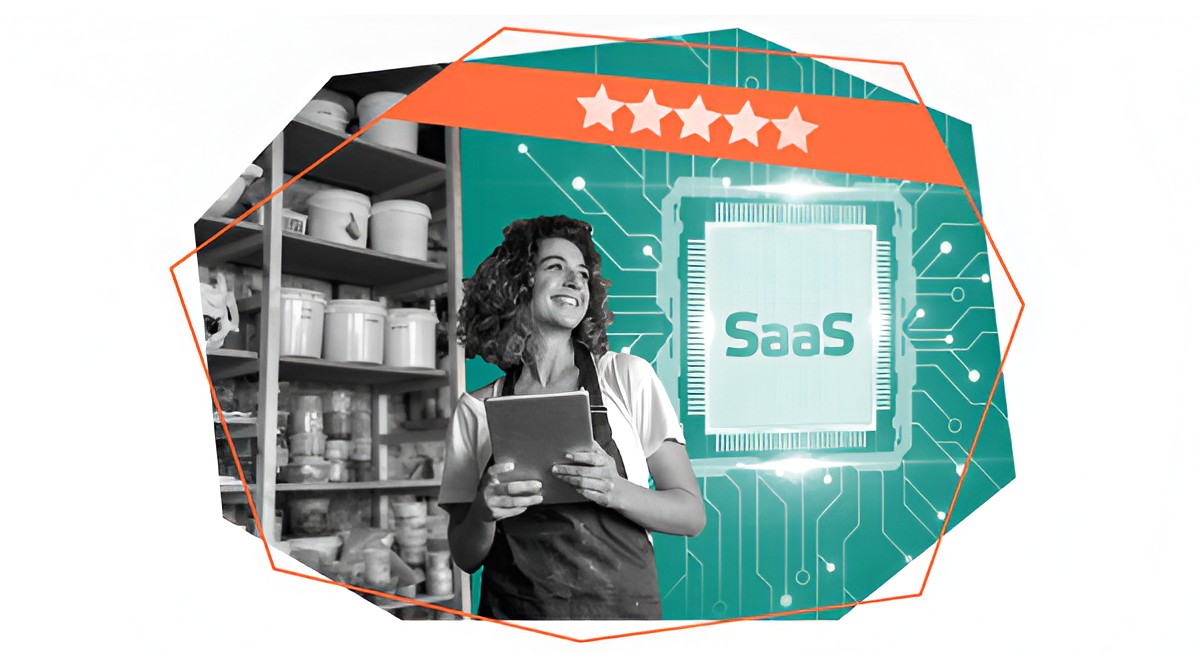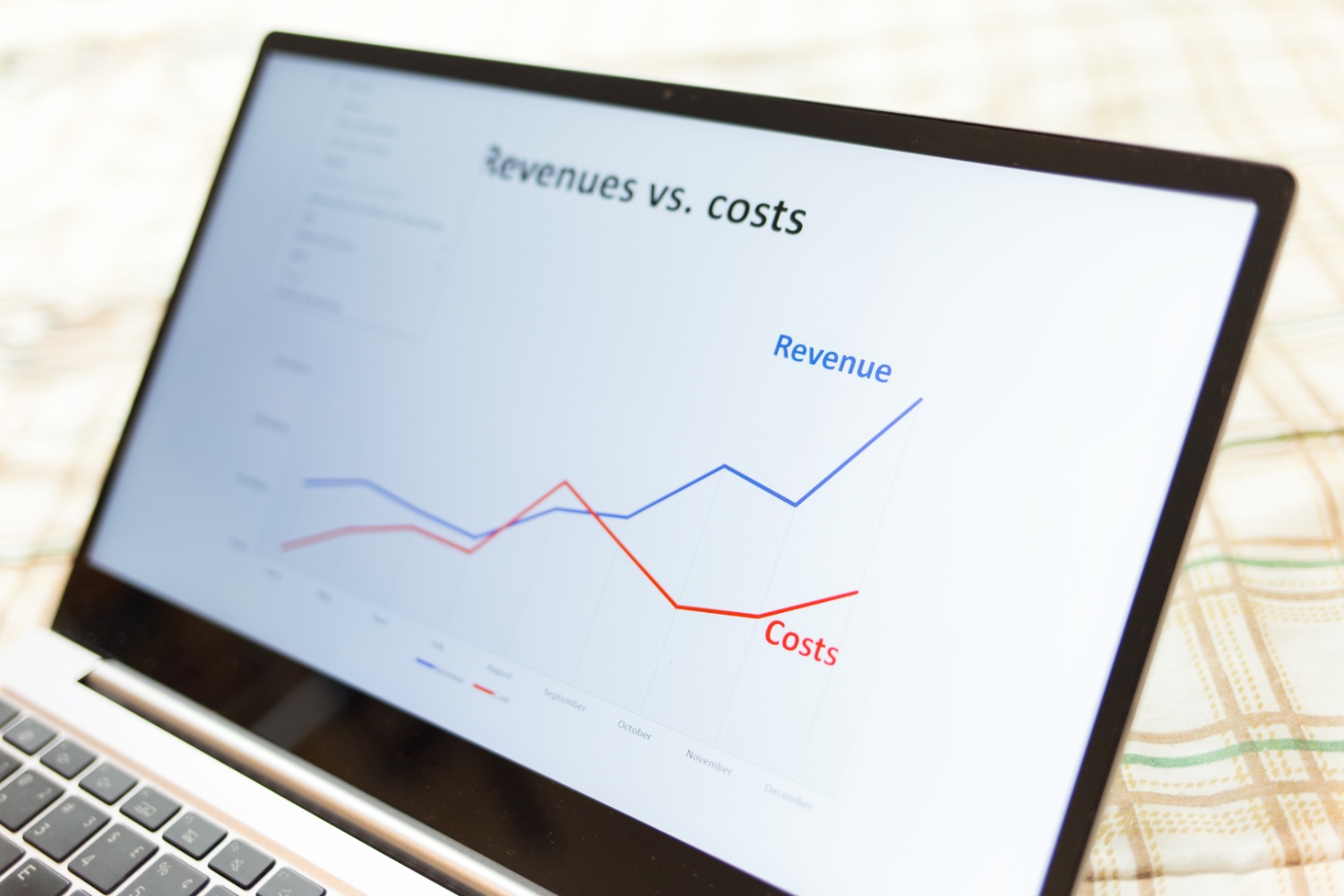Introduction
SaaS is an acronym that stands for Software as a Service. In today’s digital age, businesses are increasingly relying on cloud-based software solutions to streamline their operations and meet their ever-evolving needs. SaaS allows companies to access and utilize software applications on a subscription basis, rather than purchasing and installing them on their own servers.
With the rise of SaaS, businesses can now eliminate the need for costly hardware infrastructure and time-consuming software installations. Instead, they can simply log in to a web-based application and enjoy the benefits of powerful software without the hassle.
This article will delve deeper into the world of SaaS, exploring its definition, how it works, its advantages, common examples, key players in the industry, factors to consider when choosing a SaaS provider, challenges and limitations, and future trends. By understanding the concept of SaaS and its implications, businesses can make informed decisions and harness the power of cloud-based software to drive growth and efficiency.
So, let’s dive in and unravel the mysteries of SaaS, gaining a comprehensive understanding of its impact on businesses and the broader technology landscape.
Definition of SaaS
Software as a Service (SaaS) refers to a software delivery model where applications are hosted and provided to users over the internet. In this model, users can access the software through a web browser without the need for installation or maintenance on their local systems.
SaaS is a cloud computing model that has gained immense popularity due to the numerous benefits it offers to businesses. With SaaS, organizations can eliminate the need for upfront investments in infrastructure, such as servers and software licenses, as well as the time and resources required for software installation and updates.
Instead, SaaS providers take care of all the technical aspects, including hosting, maintenance, and security, allowing businesses to focus on their core operations. Users typically pay for SaaS applications on a subscription basis, which provides them with access to the software and any necessary support.
One key distinction of SaaS is its multi-tenant architecture, where multiple users share a single instance of the software. This allows for efficient resource utilization and cost savings for both the SaaS provider and the customers.
SaaS applications cover a wide range of functionalities and industries, including customer relationship management (CRM), project management, human resources, accounting, collaboration tools, and many more. The flexibility and scalability of SaaS make it suitable for businesses of all sizes, from startups to large enterprises.
Overall, SaaS offers businesses a cost-effective and efficient way to access the latest software applications without the burden of managing complex infrastructure and software deployments. It provides companies with the flexibility to scale their software usage as needed, thereby enabling them to focus on their core competencies and drive growth in the ever-evolving digital landscape.
How SaaS Works
SaaS operates on a cloud-based delivery model, where the software applications are centrally hosted and made available to users over the internet. Here’s a breakdown of how SaaS works:
- Infrastructure: SaaS providers manage the underlying infrastructure, including servers, databases, and network infrastructure. They ensure that the software is always available and accessible to users.
- Accessibility: Users can access SaaS applications through a web browser on their devices, such as laptops, tablets, or smartphones. This eliminates the need for complex software installations and ensures compatibility across different operating systems.
- Subscription: SaaS operates on a subscription-based pricing model. Users pay a recurring fee to access the software and its functionalities. The subscription fee often includes technical support and regular software updates.
- Scalability: One of the key advantages of SaaS is its scalability. As businesses grow or experience fluctuations in their software needs, they can easily adjust their subscription plans to align with their requirements. This flexibility allows for cost savings and ensures that businesses only pay for what they need.
- Customization: SaaS applications often offer a level of customization that allows businesses to tailor the software to their specific needs. This can include adding or removing features, modifying workflows, or integrating the software with other applications to streamline processes.
- Security: SaaS providers are responsible for ensuring the security of the hosted applications and the data stored within them. They implement robust security measures, such as data encryption, access controls, and regular security audits, to safeguard sensitive information.
By leveraging the SaaS model, businesses can enjoy several benefits. They can minimize IT infrastructure costs, as there is no need to invest in hardware or server maintenance. Additionally, SaaS applications are kept up to date by the provider, ensuring that users always have access to the latest features and improvements.
In summary, SaaS provides a convenient and cost-effective way for businesses to access and utilize software applications. It simplifies the software deployment process, enhances scalability, and allows companies to focus on their core competencies without the burden of managing complex IT infrastructure.
Advantages of SaaS
SaaS offers numerous advantages that make it an attractive choice for businesses of all sizes and industries. Here are some key benefits of adopting SaaS:
- Cost Savings: By opting for a SaaS model, businesses can significantly reduce their upfront costs. They avoid the need for expensive hardware investments and eliminate the costs associated with software installation, updates, and maintenance. Instead, they pay a predictable subscription fee, allowing for better budgeting and cost control.
- Easy Accessibility: SaaS applications are accessible over the internet through web browsers, making them available anytime, anywhere, and on any device. This enables users to access critical business tools and information on-demand, promoting collaboration and productivity across geographically dispersed teams.
- Scalability and Flexibility: SaaS applications are designed to scale with the needs of businesses. As companies grow or experience fluctuations in their software requirements, they can easily adjust their subscription plans without the hassle or cost of additional hardware or software installations. This flexibility allows businesses to allocate resources efficiently and adapt to changing market demands.
- Automatic Updates and Maintenance: SaaS providers handle all software updates and maintenance tasks, ensuring that users always have access to the latest features and enhancements. This eliminates the need for businesses to allocate time and resources for complex software installations and updates, allowing them to focus on their core activities.
- Enhanced Security: SaaS providers implement robust security measures to protect their users’ data. They employ encryption, access controls, and regular security audits to ensure data confidentiality and integrity. By leveraging the expertise of SaaS providers, businesses can benefit from industry-leading security practices without having to invest in dedicated security resources.
- Collaboration and Integration: SaaS applications often come with collaboration features that facilitate teamwork and real-time communication among employees. Moreover, many SaaS applications offer integration capabilities, allowing seamless connection with other software tools and systems. This enables businesses to streamline workflows and improve overall efficiency.
Overall, SaaS offers businesses a cost-effective, scalable, and accessible solution to meet their software needs. It allows organizations to focus on their core competencies while leveraging the expertise and infrastructure of SaaS providers. By capitalizing on the advantages of SaaS, businesses can drive productivity, enhance collaboration, and achieve long-term growth in today’s fast-paced business environment.
Common Examples of SaaS Applications
SaaS applications span a wide range of industries and functionalities, offering businesses of all types access to powerful software tools without the need for complex installations or maintenance. Here are some common examples of SaaS applications:
- Customer Relationship Management (CRM): CRM platforms such as Salesforce, HubSpot, and Zoho CRM provide businesses with tools to manage their customer interactions, track sales opportunities, and automate marketing processes. These applications enable businesses to improve customer relationships, streamline sales processes, and enhance the overall customer experience.
- Project Management: Project management tools like Asana, Trello, and Basecamp help businesses efficiently plan, coordinate, and collaborate on projects. These applications offer features such as task management, milestone tracking, team communication, and document sharing, allowing businesses to effectively manage projects and meet deadlines.
- Human Resources (HR): SaaS HR applications like BambooHR, ADP, and Workday provide businesses with comprehensive HR solutions. These platforms streamline employee onboarding, manage payroll and benefits, track time and attendance, and facilitate performance management. SaaS HR applications ensure the smooth operation of HR processes, allowing businesses to focus on their most valuable asset – their people.
- Accounting and Finance: SaaS accounting software such as QuickBooks Online, Xero, and FreshBooks enable businesses to manage their financial activities more efficiently. These applications automate invoicing, expense tracking, financial reporting, and tax preparation. SaaS accounting software provides businesses with real-time financial data, helping them make informed decisions and maintain accurate financial records.
- Collaboration Tools: Collaboration tools like Slack, Microsoft Teams, and Google Workspace (formerly G Suite) foster effective communication and collaboration among team members. These applications offer features such as instant messaging, file sharing, video conferencing, and project collaboration, enhancing teamwork and productivity in today’s fast-paced work environment.
- Document Management: Document management applications like Box, Dropbox, and Google Drive provide businesses with cloud storage and collaboration capabilities. These applications allow for secure file storage, easy document sharing, version control, and access from any device. SaaS document management solutions streamline document workflows and improve document security and accessibility.
These are just a few examples of the wide variety of SaaS applications available today. From industry-specific solutions to general business tools, SaaS applications cater to the diverse needs of businesses across different sectors. By leveraging these SaaS applications, businesses can improve efficiency, enhance collaboration, and stay ahead in today’s competitive landscape.
Key Players in the SaaS Industry
The SaaS industry is a highly competitive space, with numerous players vying for market dominance. Here are some key players in the SaaS industry:
- Salesforce: Salesforce is one of the pioneers and leaders in the SaaS industry. They offer a comprehensive suite of CRM solutions, empowering businesses to manage their customer relationships effectively. With a robust ecosystem of customizable applications and a strong focus on innovation, Salesforce continues to be a dominant force in the SaaS market.
- Microsoft: Microsoft has made significant strides in the SaaS arena with its offering, Microsoft 365. This suite of productivity tools, including Microsoft Office, Teams, and SharePoint, provides businesses with collaboration, communication, and productivity solutions. Microsoft’s strong brand presence and integration with other Microsoft products make it a popular choice for businesses of all sizes.
- Oracle: Oracle is a global provider of enterprise software solutions, including SaaS applications. Their portfolio encompasses a wide range of solutions, including enterprise resource planning (ERP), human capital management (HCM), and customer experience (CX). Oracle’s industry-specific SaaS applications cater to the needs of businesses across various sectors.
- Zendesk: Zendesk is a customer service and support platform that offers SaaS solutions to enhance customer engagement. Their SaaS suite includes ticketing systems, live chat, knowledge bases, and more, enabling businesses to provide excellent customer service. Zendesk focuses on delivering seamless customer experiences and has gained significant traction in the SaaS market.
- Adobe: Adobe is well-known for its creative software offerings. It has expanded its presence in the SaaS industry with Adobe Creative Cloud, a subscription-based suite of creative applications like Photoshop, Illustrator, and Premiere Pro. Adobe’s SaaS solutions enable creative professionals and businesses to access industry-leading tools and stay at the forefront of design and digital content creation.
- ServiceNow: ServiceNow is a leading provider of cloud-based IT service management (ITSM) solutions. Their SaaS platform streamlines and automates IT service processes, helping businesses optimize service delivery and support. ServiceNow’s focus on ITSM has made it a go-to choice for organizations seeking efficient IT service management solutions.
These are just a few examples of the key players in the SaaS industry. Other notable players include Amazon Web Services (AWS), Google Cloud, Zoom, Slack, and HubSpot. The SaaS market is dynamic, with new entrants and innovations continuously reshaping the landscape.
When choosing a SaaS provider, businesses should consider factors such as the provider’s reputation, experience, security measures, integration capabilities, scalability, and pricing models. By partnering with a reputable and reliable SaaS provider, businesses can leverage the full potential of cloud-based software and drive their growth and success.
Factors to Consider When Choosing a SaaS Provider
When selecting a SaaS provider, businesses should carefully evaluate several factors to ensure they choose the right solution for their needs. Here are some key factors to consider:
- Reliability and Reputation: Look for a SaaS provider with a solid track record of reliability and uptime. Consider their reputation in the industry and read customer reviews and testimonials to gauge customer satisfaction.
- Data Security: Ensure that the SaaS provider has robust security measures in place to protect your data. Look for features such as data encryption, access controls, regular security audits, and compliance with industry regulations.
- Scalability: Assess whether the SaaS solution can scale with the needs of your business. Consider factors such as user scalability, storage capacity, and the ability to handle increased data and workload as your business grows.
- Integration and Compatibility: Evaluate how well the SaaS solution integrates with your existing systems and applications. Seamless integration ensures data consistency, streamlines workflows, and minimizes disruption during implementation.
- Customization and Flexibility: Determine the level of flexibility the SaaS provider offers in terms of customization. Can you tailor the solution to your specific needs? Consider whether the provider offers customizable features or APIs that allow for integration with other tools and systems.
- Support and Training: Assess the level of support and training provided by the SaaS provider. Do they offer 24/7 customer support? Are there resources, training materials, or community forums available to help you maximize the value of the SaaS solution?
- Pricing and Cost Structure: Evaluate the pricing model of the SaaS provider. Consider whether they offer a transparent pricing structure, whether it aligns with your budget, and if there are any hidden costs such as additional fees for extra user licenses or storage.
- Vendor Lock-In: Consider whether the SaaS provider allows for easy data portability and the ability to switch to another provider if needed. Avoid being locked into a long-term contract without an exit plan.
- Future Roadmap: Research the provider’s future plans and commitment to innovation. Consider how frequently they release updates and new features, as well as their ability to adapt to evolving market needs.
- References and Case Studies: Request references from current clients or ask for case studies that demonstrate the provider’s success in implementing the solution for businesses similar to yours. This can provide insights into the provider’s expertise and ability to meet your specific requirements.
By carefully evaluating these factors, businesses can make an informed decision when selecting a SaaS provider. It is crucial to choose a provider that aligns with your business goals, values data security, offers reliable support, and provides a flexible and scalable solution to drive your success in the dynamic SaaS landscape.
Challenges and Limitations of SaaS
While SaaS offers numerous benefits, there are also some challenges and limitations that businesses should consider before adopting this software delivery model. Here are some key challenges and limitations of SaaS:
- Data Security Concerns: Storing data in the cloud raises concerns about data security and privacy. Businesses must ensure that the SaaS provider has robust security measures in place to protect sensitive information from unauthorized access or data breaches.
- Dependency on Internet Connectivity: SaaS applications require a stable internet connection to function effectively. If the internet connection is unreliable or experiences downtime, it can disrupt business operations and hinder access to critical data and applications.
- Limited Customization: SaaS applications are designed to cater to a broad customer base, which can limit the ability to customize the software according to specific business requirements. While many SaaS providers offer some level of customization, it may not be as extensive as what is possible with on-premises software.
- Data Portability: Moving data from one SaaS provider to another can be challenging. Businesses may face difficulties in extracting and migrating their data to a different platform, leading to vendor lock-in and potential data compatibility issues.
- Service Level Agreements (SLAs): Businesses must carefully review and negotiate SLAs with the SaaS provider to ensure that the agreed-upon service levels, performance, and uptime are met. Failure to meet SLAs can result in disruptions to business operations and customer dissatisfaction.
- Regulatory Compliance: Depending on the industry and geographical location, businesses may need to comply with specific regulations for data storage and protection. It is essential to ensure that the chosen SaaS provider meets the necessary compliance requirements to avoid legal and regulatory complications.
- Cost Over Time: While SaaS offers cost savings in the short term, the recurring subscription fees can add up over time. Businesses must carefully evaluate the long-term costs and assess whether it is more cost-effective than on-premises or other software delivery models in the long run.
- Limited Offline Access: SaaS applications typically require an internet connection to access and use. This can limit productivity and accessibility in situations where internet connectivity is not available or unstable.
- Dependency on the SaaS Provider: Businesses rely on the SaaS provider for uptime, maintenance, and support. If the provider experiences technical issues or goes out of business, it can disrupt business operations and access to critical software applications.
Businesses should carefully consider these challenges and limitations alongside the benefits of SaaS. Analyzing their specific requirements, risk tolerance, and long-term goals will help businesses determine whether SaaS is the right fit for their needs or if alternative software delivery models should be considered.
Future Trends in SaaS
The SaaS industry continues to evolve and innovate, adapting to the changing needs and technological advancements in the business world. Here are some key future trends in SaaS:
- Artificial Intelligence (AI) and Machine Learning (ML): AI and ML technologies are increasingly being integrated into SaaS applications. These technologies enable automation, intelligent data analysis, and predictive capabilities, enhancing the value and functionality of SaaS solutions across various industries.
- Vertical-Specific SaaS Solutions: As businesses require more specialized software, there is a growing trend towards vertical-specific SaaS solutions. These solutions cater to the unique needs of specific industries, offering features and functionalities tailored to their requirements. By focusing on industry-specific needs, these SaaS solutions can deliver enhanced value and better address industry-specific challenges.
- Edge Computing and IoT Integration: With the rise of edge computing and the Internet of Things (IoT), SaaS applications are expected to integrate these technologies. Edge computing brings computing power closer to the data source, reducing latency and increasing efficiency. SaaS applications can leverage edge computing and IoT to process and analyze real-time data, enabling more intelligent and responsive applications.
- Containerization and Microservices: Containerization technologies, such as Docker and Kubernetes, are gaining traction in the SaaS industry. They allow for faster deployment, scalability, and portability of SaaS applications. Microservices architecture, coupled with containerization, enables modular and scalable SaaS applications, offering flexibility for businesses and facilitating easier upgrades and maintenance.
- Data Analytics and Business Intelligence (BI): SaaS applications are increasingly incorporating robust data analytics and business intelligence capabilities. These features allow businesses to gain deeper insights from their data, empowering them to make data-driven decisions and uncover actionable insights that drive growth and efficiency. Predictive analytics and advanced reporting functionalities are also becoming more prevalent in SaaS solutions.
- Serverless Architecture: Serverless architecture, where the cloud provider manages the infrastructure and resources, is gaining popularity in the SaaS industry. This approach allows businesses to focus more on their application development and reduces the burden of managing infrastructure, leading to increased agility and cost savings.
- Enhanced Collaboration and Communication: Collaboration and communication tools are being further integrated into SaaS applications to facilitate remote work and improve teamwork. Features like real-time collaboration, document sharing, and video conferencing enhance productivity and enable seamless collaboration among distributed teams.
- Consumerization of Enterprise Software: SaaS applications are becoming more user-friendly and adopting design principles from consumer software. This trend, known as the consumerization of enterprise software, focuses on providing intuitive interfaces, streamlined user experiences, and mobile accessibility, making SaaS applications more user-friendly and accessible to all levels of users.
These trends indicate the direction that the SaaS industry is heading, and businesses can leverage these advancements to enhance productivity, efficiency, and competitiveness. By staying abreast of emerging trends and selecting SaaS providers that embrace innovation, businesses can ensure they are equipped with the latest technologies and capabilities to drive their success in the future.
Conclusion
SaaS, or Software as a Service, has revolutionized the way businesses access and utilize software applications. By leveraging cloud-based solutions, businesses can enjoy numerous benefits such as cost savings, easy accessibility, scalability, and automatic updates. The SaaS industry is filled with key players offering a wide range of applications, including CRM, project management, HR, accounting, collaboration tools, and more. When choosing a SaaS provider, businesses should consider factors such as reliability, data security, customization options, support, and pricing models.
While SaaS offers many advantages, it also comes with challenges and limitations. Data security concerns, dependency on internet connectivity, limited customization, and potential vendor lock-in are some factors businesses need to carefully consider. However, looking into the future, SaaS is set to continue evolving. Trends such as artificial intelligence and machine learning integration, vertical-specific solutions, edge computing and IoT integration, containerization and microservices, data analytics and business intelligence, serverless architecture, enhanced collaboration and communication, and consumerization of enterprise software are shaping the future of SaaS.
As businesses navigate the SaaS landscape, it is crucial to conduct thorough evaluations, understand specific requirements, and choose a provider that aligns with their needs and goals. By embracing the power of SaaS and staying ahead of emerging trends, businesses can leverage cloud-based software to drive growth, efficiency, and innovation in today’s digital age.

























